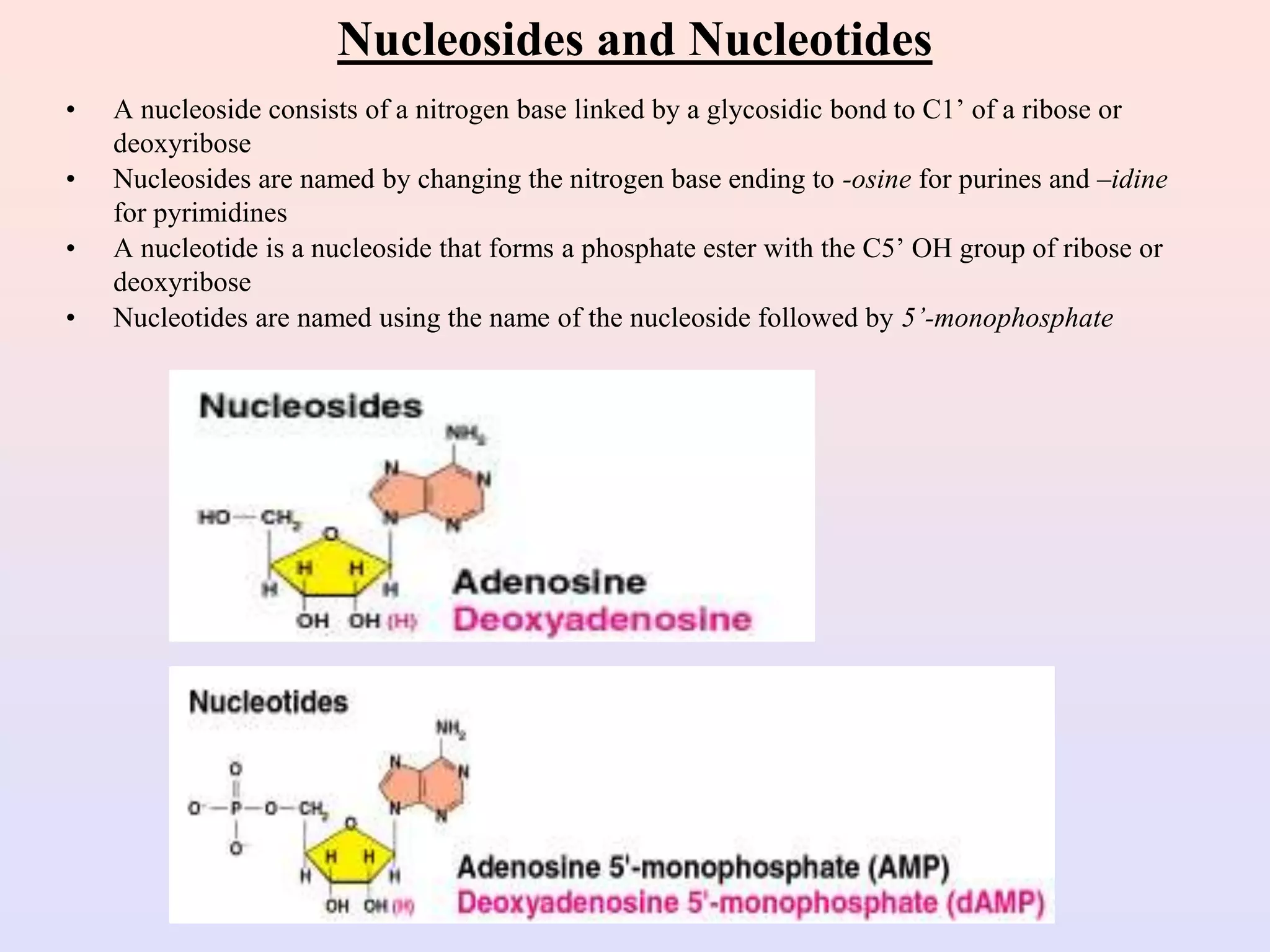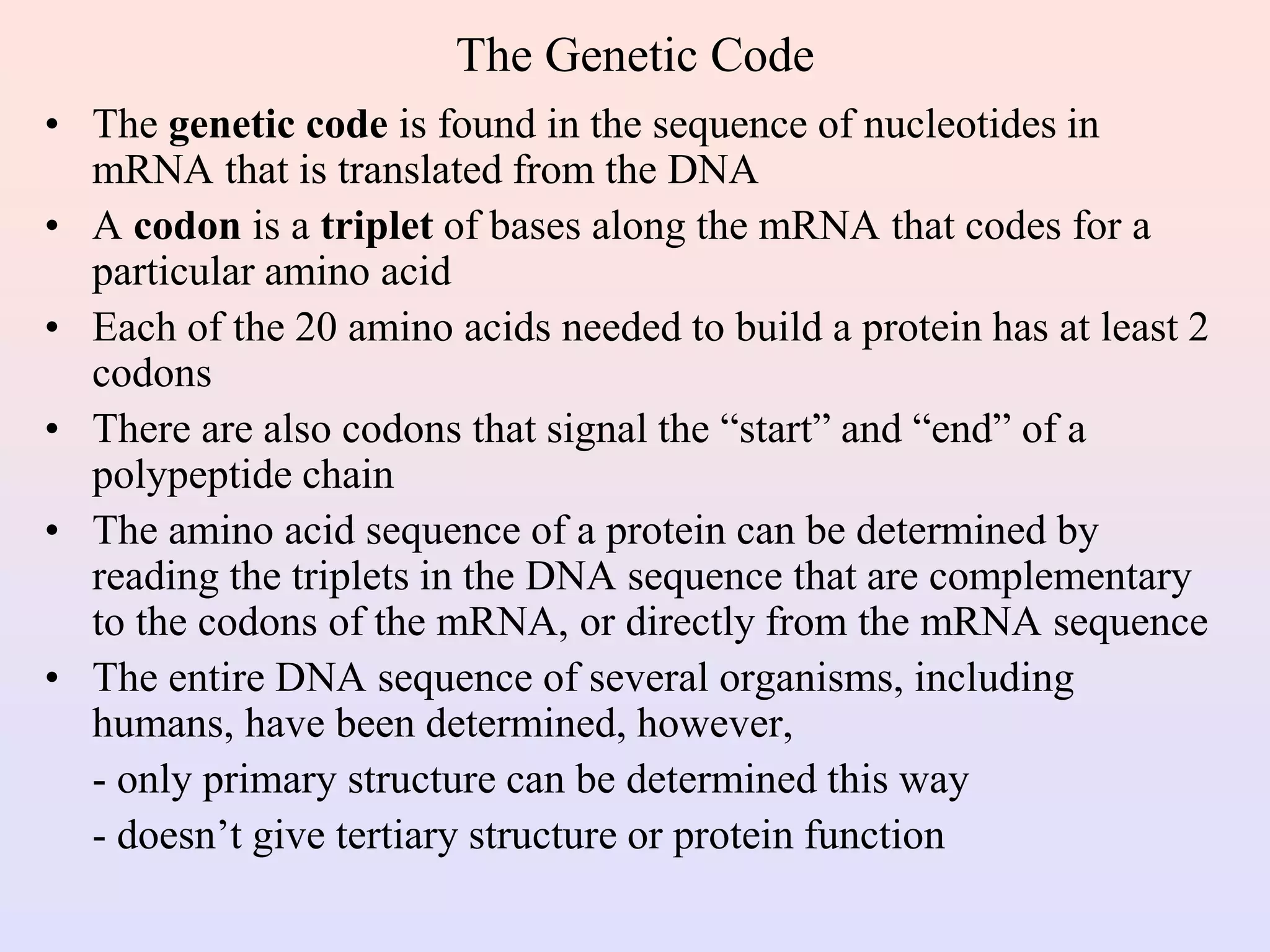Nucleic acids are polymers made of nucleotides that store cellular information. There are two types: DNA contains the genes and RNA assists in protein production. A nucleotide contains a nitrogen base, sugar (ribose in RNA, deoxyribose in DNA), and phosphate. DNA forms a double helix through base pairing of A-T and G-C and is replicated semi-conservatively. RNA includes rRNA, tRNA, and mRNA and helps translate the genetic code carried by DNA into proteins.



























